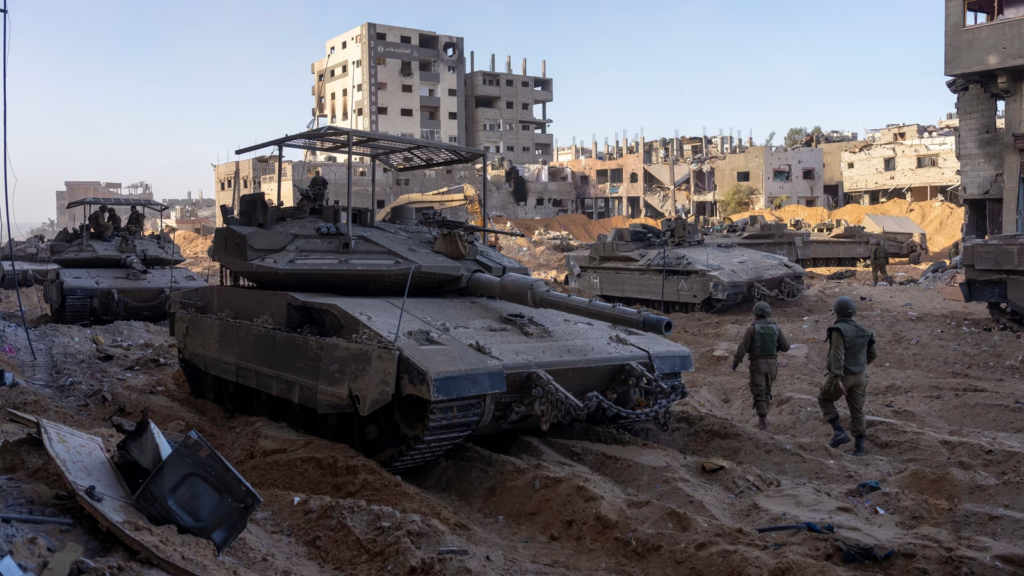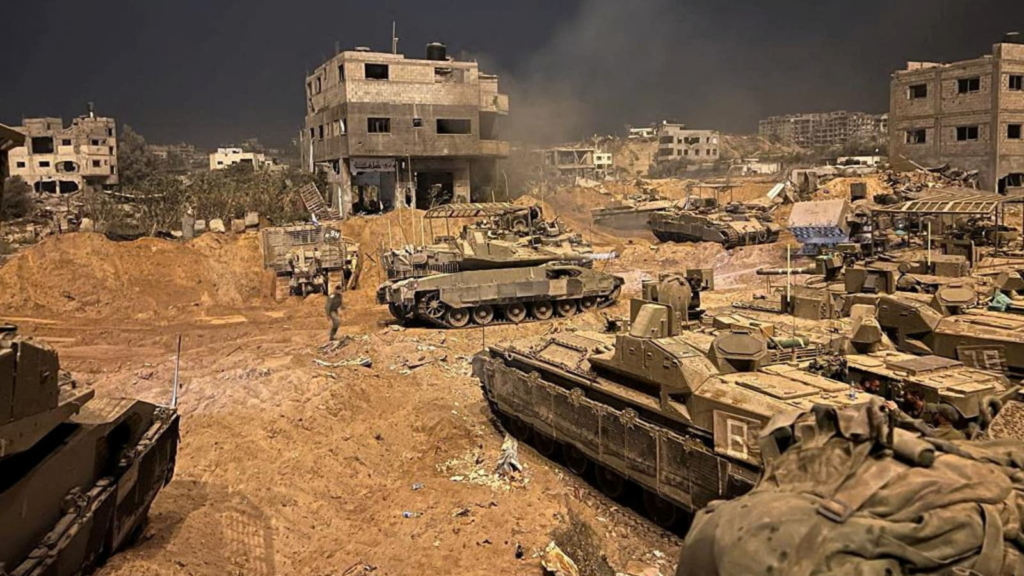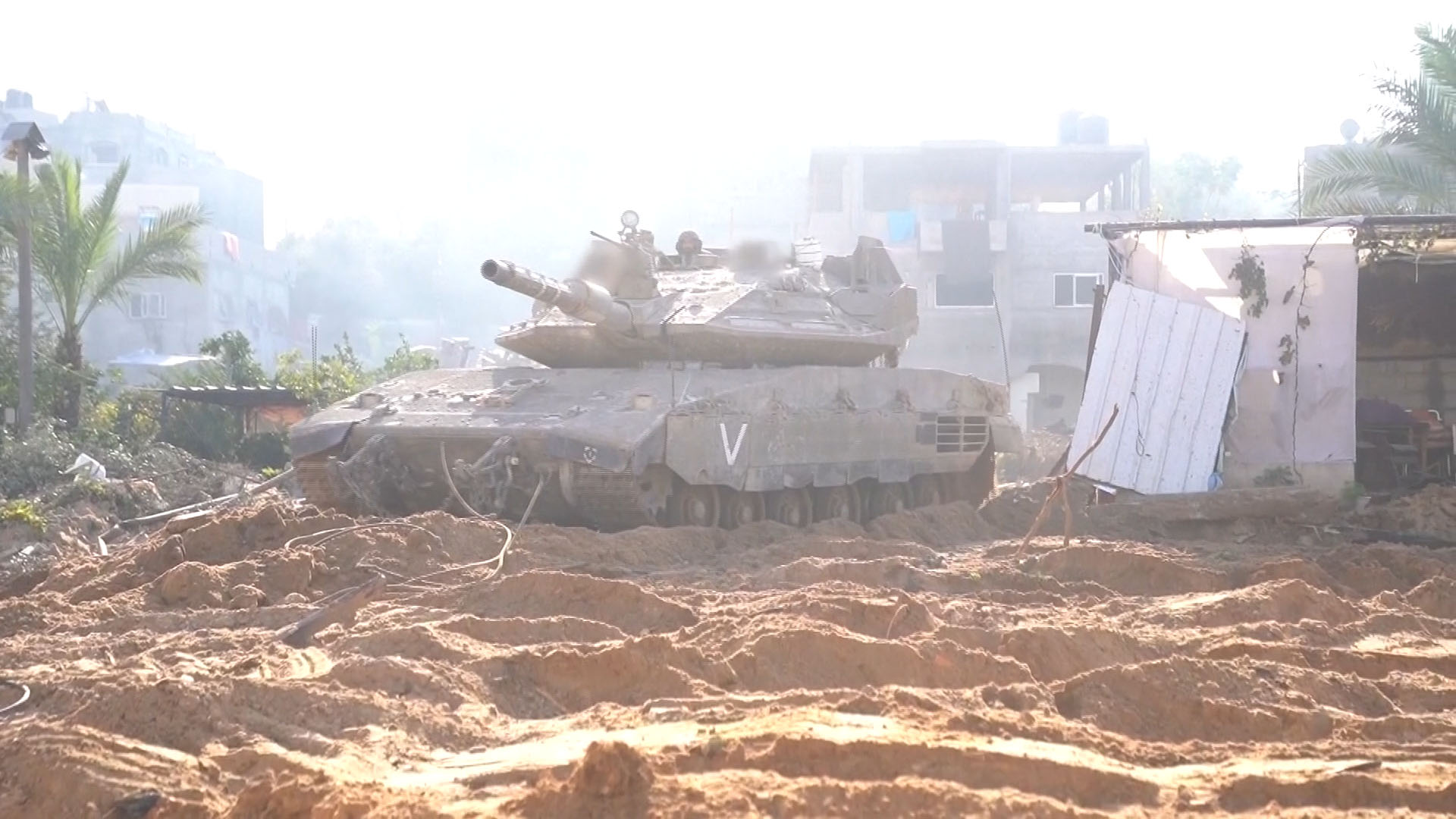In a significant shift in negotiations, Hamas Agrees to Temporary Israel Military Presence in Gaza under a potential ceasefire-hostage deal. This agreement marks a notable change in Hamas’ stance, as the group had previously refused any deal that did not involve the complete withdrawal of Israeli forces from Gaza.
The decision, which follows months of mediation efforts, is seen as a sign of easing tensions and a move toward a potential ceasefire, which has eluded negotiators for over a year.
Hamas Agrees to Temporary Israel Military Presence In Gaza
Hamas’ position on the ceasefire and the Israeli military presence has evolved significantly in recent months. For over a year, the terror group had insisted that any deal must include a permanent end to the war in Gaza and a full withdrawal of Israeli forces.
The Israeli Defense Forces (IDF) had been engaged in a prolonged military campaign against Hamas following the group’s attack on Israeli civilians and military personnel on October 7, 2023, which sparked the ongoing conflict.
However, sources from Arab mediation teams have indicated that Hamas is now prepared to accept a temporary IDF presence as part of a ceasefire agreement.
Read : Hamas Threatens to Kill Hostages if Israel Launches Rescue Operation
This change in stance is viewed as a response to mounting pressure from international mediators, including those from Qatar and Egypt, who have been working tirelessly to negotiate an agreement between Israel and Hamas.
Read : Qatar Threatens to Expel Hamas if It Rejects Ceasefire Deal
Despite the shift, the core demands of both sides remain a point of contention. While Hamas has indicated it is willing to release a certain number of hostages, Israel is pushing for more hostages to be freed in the initial phase of any ceasefire agreement.
Hostage Releases and the First Phase of the Deal
Central to the negotiations is the issue of hostages. Hamas has agreed to release a number of hostages, which is considered a significant breakthrough in the negotiations. According to reports, Hamas has provided a list of hostages that it would be willing to free in the first phase of the deal.
The hostages on this list are primarily US nationals, women, older individuals, and those with medical conditions. Additionally, the list includes the names of five hostages who have already been confirmed dead. This release would be part of a broader hostage exchange agreement, with Israel expected to release Palestinian prisoners in return.

While this hostage release marks progress, the number of hostages being freed in the initial phase is smaller compared to last year’s deal, where dozens of hostages were released over a week-long truce. Israeli negotiators are pushing for more hostages to be released in the early stages of the deal to ensure the ceasefire has a strong foundation.
The release of hostages has become a critical issue in the ongoing negotiations, as families of those held captive in Gaza continue to demand the safe return of their loved ones.
Israeli Military Presence and the Philadelphi Corridor
One of the more contentious aspects of the potential ceasefire deal is the temporary presence of Israeli troops in Gaza. Prime Minister Benjamin Netanyahu has long maintained that Israeli forces would remain in the region, particularly in the Philadelphi Corridor, a strategic area along the Gaza-Egypt border.
Hamas had previously opposed any Israeli military presence, but the latest reports indicate that the terror group is now open to a temporary presence in exchange for a ceasefire agreement.

In addition to agreeing to a temporary military presence, Hamas has reportedly consented to the continued Israeli control over the Rafah Crossing, the main border crossing between Gaza and Egypt. Hamas had initially hoped to take control of the crossing but has now agreed to not interfere with its operation.
This concession is seen as a significant step toward de-escalating tensions, as it ensures that the flow of humanitarian aid and goods can continue to enter Gaza without interference from Hamas.
The Role of International Mediation and Upcoming Diplomatic Efforts
The shift in Hamas’ position comes as a result of intense international mediation, with key actors such as Qatar, Egypt, and the United States playing central roles in facilitating talks. Last week, Mossad chief David Barnea traveled to Doha to meet with Qatari Prime Minister Mohammed bin Abdulrahman al-Thani, a key mediator in the talks.
This meeting was part of ongoing efforts to finalize a deal before the inauguration of U.S. President-elect Donald Trump in January. The United States has been heavily involved in diplomatic efforts to bring about a ceasefire, with National Security Adviser Jake Sullivan meeting with Israeli officials in Jerusalem earlier this week.

Sullivan’s visit is seen as part of a broader strategy to secure a deal before the transition of power in the U.S. As President Trump has expressed his determination to see the hostages released, U.S. diplomatic efforts are intensifying in hopes of reaching an agreement that could reduce hostilities in Gaza and bring the ongoing war to a close.
The Prospects of a Ceasefire and the Long Road Ahead
Despite the progress made in the negotiations, many challenges remain. A Western diplomat involved in the talks told Reuters that while a deal is beginning to take shape, it is likely to be limited in scope, involving only a small number of hostages and a temporary pause in hostilities. This represents a departure from earlier discussions that aimed for a more comprehensive ceasefire and longer-term arrangements.
The Israeli government’s position, particularly regarding the military presence in Gaza, remains a major sticking point. Prime Minister Netanyahu’s insistence on maintaining Israeli forces in key areas, such as the Philadelphi Corridor, is a critical part of the negotiations.

At the same time, Hamas’ acceptance of a temporary military presence marks a significant shift in the group’s stance and could serve as a stepping stone toward a broader ceasefire agreement.
For now, both sides remain entrenched in their positions, with ongoing efforts to bridge the gap between their demands. The coming weeks will be crucial in determining whether a ceasefire deal can be reached, and whether it will lead to a broader resolution to the conflict.
In the meantime, families of the hostages continue to hold out hope for the safe return of their loved ones, while the international community watches closely as the diplomatic efforts unfold. As negotiations continue, the future of Gaza remains uncertain, with the possibility of a fragile ceasefire offering a glimmer of hope in an otherwise dire situation.
let’s enjoy few years on earth with peace and happiness….



